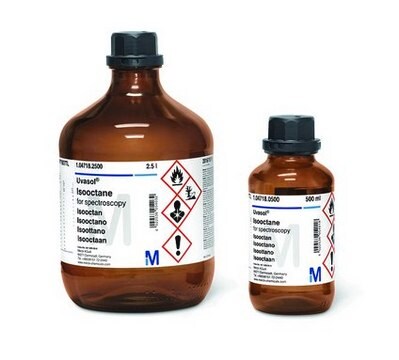270393
Tetrachloroethylene
suitable for HPLC, ≥99.9%
Synonym(s):
PCE, Perchloroethylene
About This Item
Recommended Products
vapor density
5.83 (vs air)
Quality Level
vapor pressure
13 mmHg ( 20 °C)
19 mmHg ( 25 °C)
Assay
≥99.9%
form
liquid
purified by
glass distillation
technique(s)
HPLC: suitable
impurities
<0.050% water
evapn. residue
<0.0005%
color
APHA: ≤10
refractive index
n20/D 1.505 (lit.)
bp
121 °C (lit.)
mp
−22 °C (lit.)
density
1.623 g/mL at 25 °C (lit.)
λ
H2O reference
UV absorption
λ: 290 nm Amax: 1.00
λ: 295 nm Amax: 0.30
λ: 300 nm Amax: ≤0.20
λ: 305 nm Amax: 0.10
λ: 350 nm Amax: 0.05
λ: 400 nm Amax: 0.03
application(s)
food and beverages
SMILES string
Cl\C(Cl)=C(\Cl)Cl
InChI
1S/C2Cl4/c3-1(4)2(5)6
InChI key
CYTYCFOTNPOANT-UHFFFAOYSA-N
Looking for similar products? Visit Product Comparison Guide
Application
- Dispersive liquid-liquid microextraction as a novel enrichment approach for compound-specific carbon isotope analysis of chlorinated phenols.: This study introduces a novel microextraction technique involving tetrachloroethylene, enhancing the sensitivity and specificity of carbon isotope analysis in complex environmental samples (Martin et al., 2024).
- Photo-on-Demand In Situ One-Pot Synthesis of Carbonate Esters from Tetrachloroethylene.: This research presents a novel photochemical method for synthesizing carbonate esters from tetrachloroethylene, demonstrating its potential in synthetic organic chemistry and industrial applications (Higashimura et al., 2024).
Signal Word
Warning
Hazard Statements
Precautionary Statements
Hazard Classifications
Aquatic Chronic 2 - Carc. 2 - Eye Irrit. 2 - Skin Irrit. 2 - Skin Sens. 1 - STOT SE 3
Target Organs
Central nervous system
Storage Class Code
6.1C - Combustible acute toxic Cat.3 / toxic compounds or compounds which causing chronic effects
WGK
WGK 3
Flash Point(F)
No data available
Flash Point(C)
No data available
Certificates of Analysis (COA)
Search for Certificates of Analysis (COA) by entering the products Lot/Batch Number. Lot and Batch Numbers can be found on a product’s label following the words ‘Lot’ or ‘Batch’.
Already Own This Product?
Find documentation for the products that you have recently purchased in the Document Library.
Customers Also Viewed
Our team of scientists has experience in all areas of research including Life Science, Material Science, Chemical Synthesis, Chromatography, Analytical and many others.
Contact Technical Service










